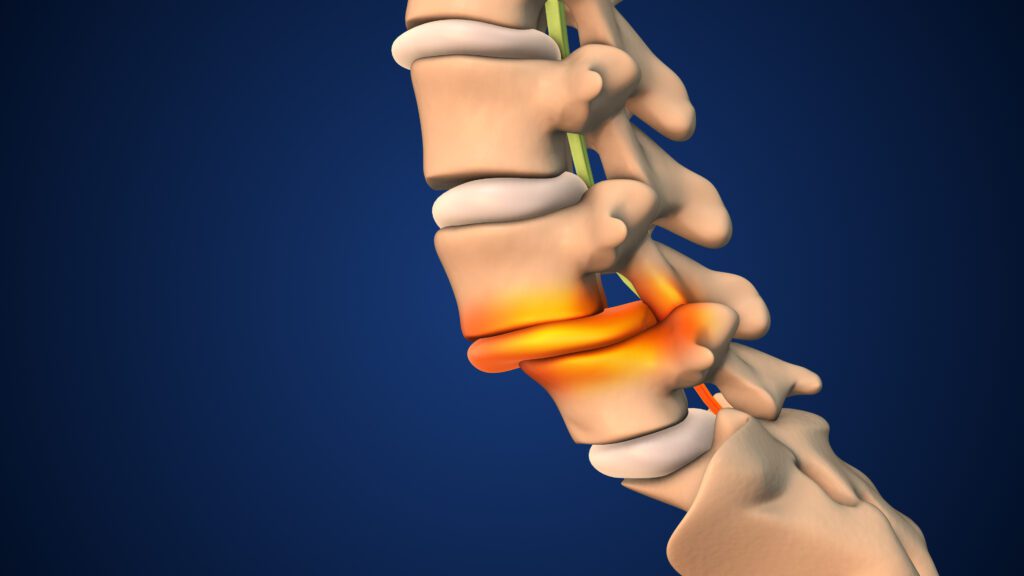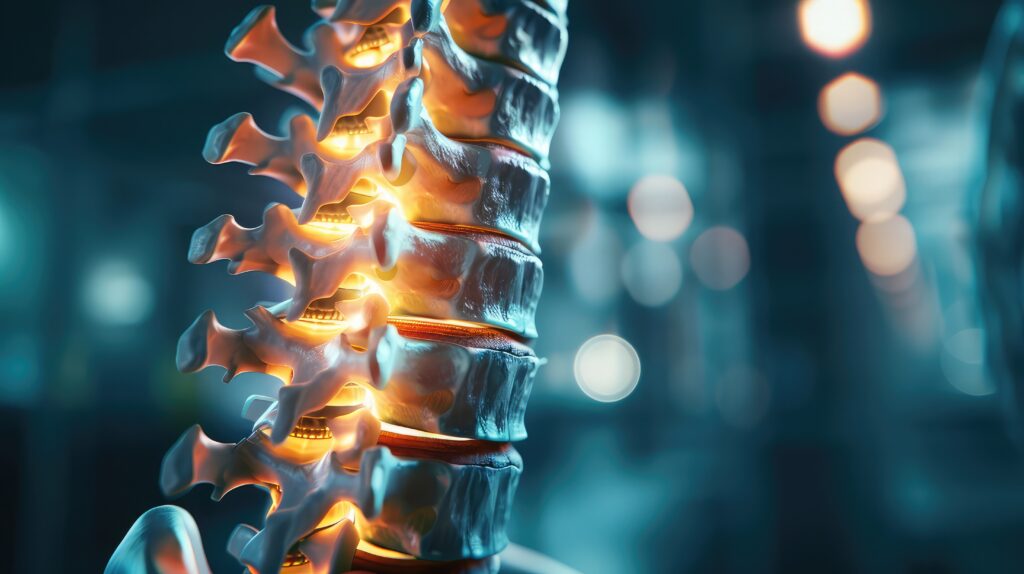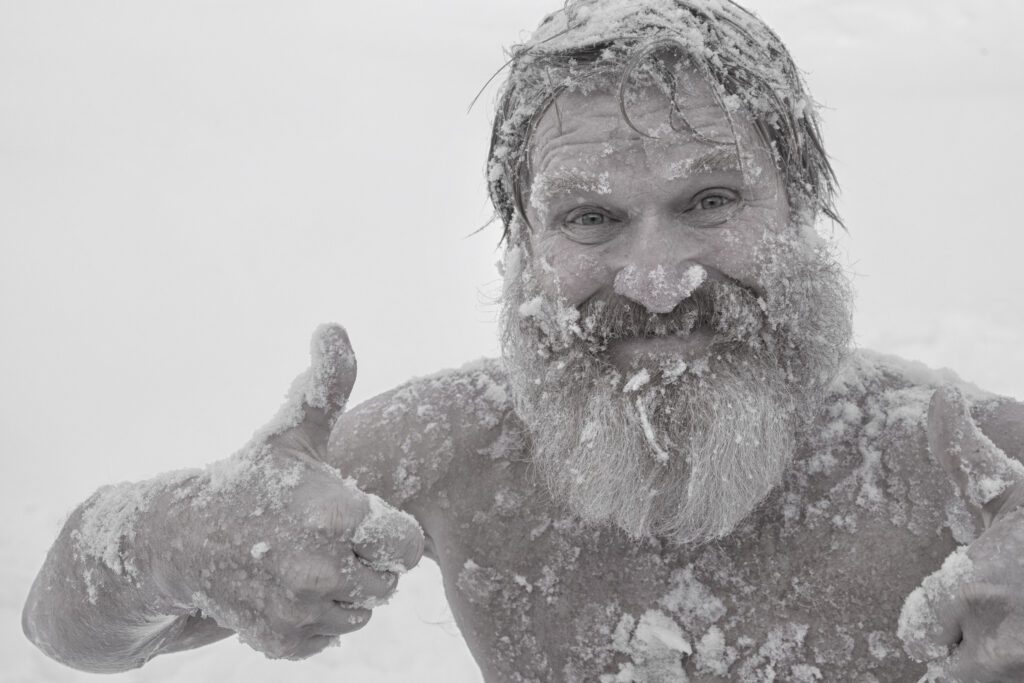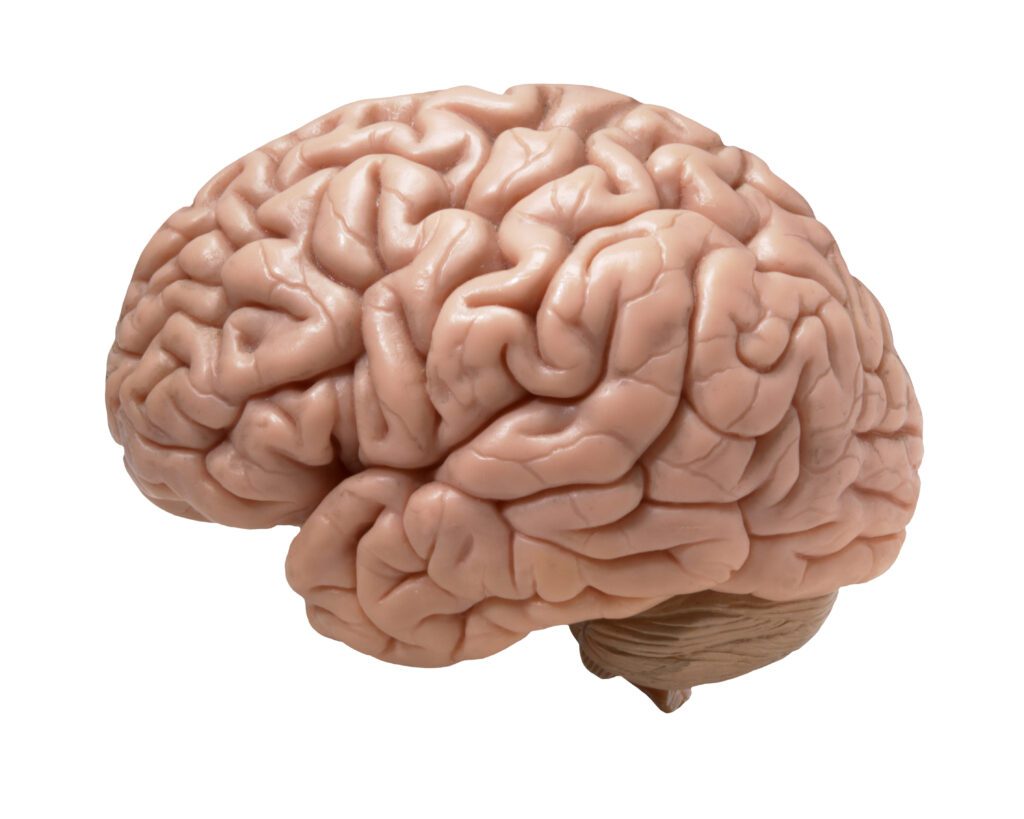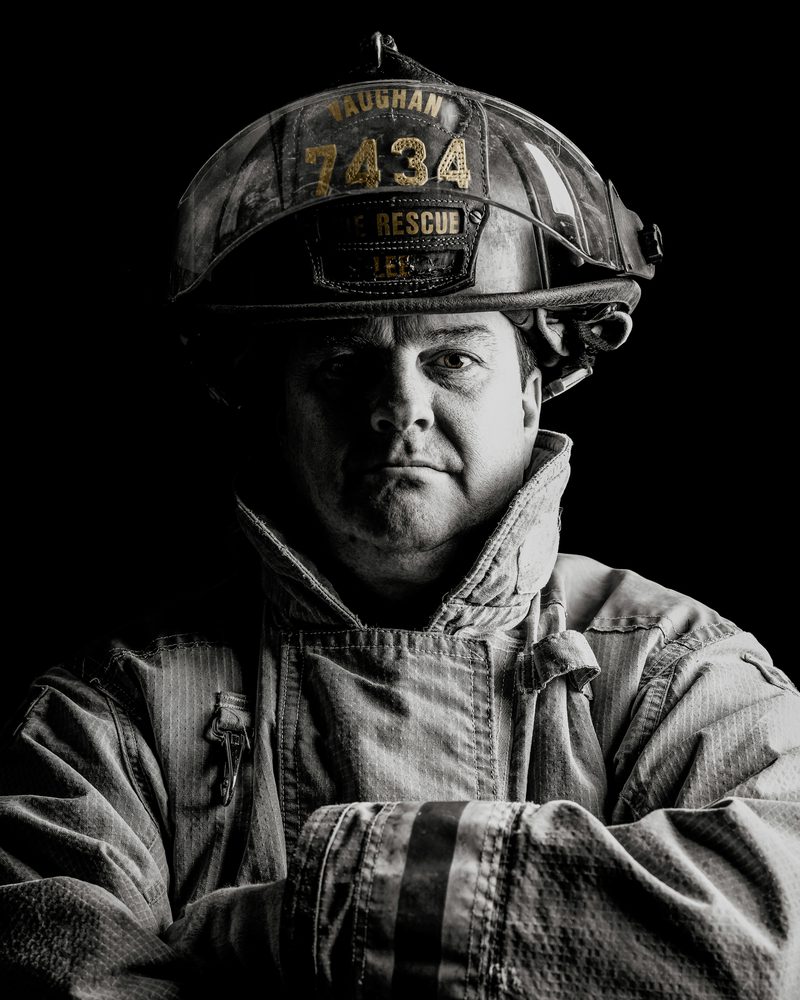When someone is told that a vertebra in their spine has slipped, it can create an immediate sense of fear. Many patients who visit my Kelowna chiropractic clinic arrive worried that something sudden, dramatic, or irreversible has happened. After nearly 30 years of caring for people with spinal alignment problems, I can confidently tell you that a slipped vertebra is rarely a sudden event. It is almost always something that develops slowly, often over years of small changes and accumulated strain.
I am Dr. Graham Jenkins, an advanced certified Chiropractic BioPhysics doctor in Kelowna, British Columbia. In this article, I am going to help you understand what it really means when a vertebra slips and what terms like anterolisthesis, retrolisthesis, and spondylolisthesis actually describe. More importantly, you will learn why this happens, what it does or does not mean for your future, and how we can often correct mild to moderate cases using a highly specific, non surgical approach.
If you have recently been diagnosed with one of these conditions, you may be wondering whether surgery is the only option. In reality, most people with vertebral slippage do not require surgery. The path forward depends entirely on the degree of the shift and whether it creates instability or pressure on nearby nerves.
My goal in this article is to help you understand the root cause of the problem, how it affects your spine, and how targeted corrective chiropractic care can help restore alignment, improve stability, and reduce symptoms. I will also share insights from my clinic in Kelowna so you can understand what we see every day and how we help patients return to walking, bending, lifting, and living with confidence again.
By the end of this article, you will have a clear, hopeful, and practical understanding of what is happening in your spine and what you can do to move forward safely.
Why This Problem Happens
The idea of a bone slipping out of place can be unsettling. Many people imagine something breaking or shifting suddenly during a fall or twist. While this can happen in rare circumstances, most cases of spondylolisthesis develop gradually. In my Kelowna practice, it is common to meet people who have no memory of an injury but have been dealing with nagging stiffness, back pain, or leg symptoms for years.
The spine is designed to withstand significant force, but it relies on a balanced structure of discs, joints, ligaments, and muscles to stay stable. When daily habits begin to weaken this support system, the alignment of a vertebra can shift slightly forward or backward.
Forward slippage is called anterolisthesis. Backward slippage is called retrolisthesis. The general term, spondylolisthesis, simply means one vertebra has shifted in relation to the one below it.
A common cause is chronic postural strain. Sitting for long hours, bending repeatedly in the same direction, and carrying stress in the lower back can gradually fatigue the stabilizing tissues. The ligaments around the vertebrae may stretch, discs may thin, and facet joints may become overloaded. When the stabilizing system weakens, a vertebra may no longer hold its ideal position.
Some people have spinal curvature patterns that create added pressure on certain segments. For example, an exaggerated lumbar arch increases shear forces on the vertebrae in the lower back. When these forces persist for years, the bones slowly shift.
Old injuries can also contribute. A fall, even one that seemed minor at the time, can damage the ligaments and joints. Once the stabilizing tissues are weakened, the body compensates. Muscles tighten to protect the area. Posture changes. New movement patterns develop. Over time, the altered biomechanics can allow a vertebra to slip forward or backward.
The important thing to understand is that a slipped vertebra does not mean your spine is fragile or collapsing. Mild or moderate shifts are common and often remain stable for years. The key is to identify how severe the slip is, whether it is affecting nerve function, and what can be done to reduce the strain on the area.
In Kelowna, I commonly see people who have been told they have a slipped vertebra and assume surgery is inevitable. Once we measure the alignment properly, most of them are relieved to learn that their condition is mild or moderate and can be addressed safely with non surgical corrective care.
Key Strategies or Steps
Understanding What Happens Inside the Spine
To picture what is happening inside your spine, imagine a stack of rectangular blocks. When every block is perfectly aligned, the entire structure is stable. When one block shifts even slightly, it changes how the blocks above and below fit together. The same thing happens in your spine.
With spondylolisthesis, one vertebra slides forward or backward. This alters the normal pathways of pressure and motion. The disc between the vertebrae becomes strained. The joints behind the vertebra are stressed. Ligaments stretch or weaken. Over time, the space where nerves exit the spine can narrow, creating irritation that may cause numbness, tingling, or shooting pain into the legs.
When alignment shifts, the body automatically compensates. Muscles tighten to create stability. Posture changes to reduce strain. Movement patterns become protective. These compensations can create stiffness, fatigue, and additional discomfort. What surprises many patients in Kelowna is that the pain they feel is often less about the slip itself and more about the body’s reaction to the shift.
Understanding this process is empowering because it shows that the spine has not collapsed. It has simply adapted. With the right corrective approach, we can help the spine become more aligned, more stable, and more comfortable again.
Understanding the Diagnosis
To diagnose spondylolisthesis correctly, we need imaging that shows how your spine functions under the weight of your body. MRI and CT scans are valuable tools, especially when evaluating nerve pressure or disc damage. However, they are taken while lying down. Gravity is removed. The spine is not bearing weight. As a result, they cannot fully show how the vertebrae behave when you are standing, walking, or moving throughout the day.
In my Kelowna clinic, full spine, weight bearing X rays are essential. These images clearly show how much a vertebra has slipped forward or backward in real life. If the movement exceeds about three and a half millimeters, we consider that segment unstable. This helps us determine which cases require immediate stabilization and which can be corrected more gradually.
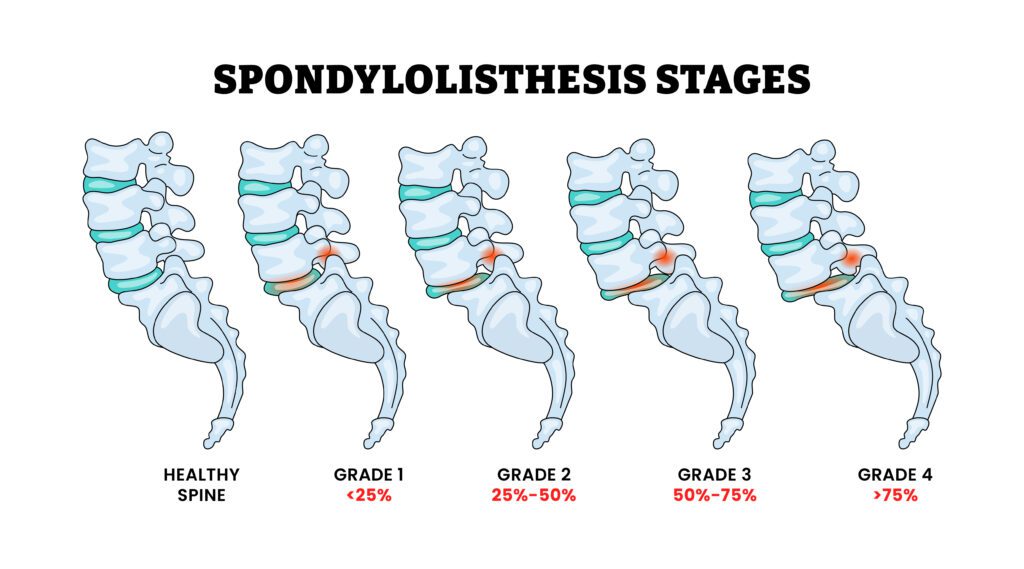
We also evaluate the grade of the slip. Grade one is mild, up to twenty five percent. Grade two is moderate, between twenty five and fifty percent. Grade three and four represent more significant shifts, and grade five describes a complete slippage. Most people fall into the first two categories, which means conservative, non surgical care is typically safe, effective, and appropriate.
Weight bearing X rays allow us to create a plan that is precise. In Kelowna, we rely on these measurements to determine whether someone is a good candidate for corrective chiropractic care. Once we understand the structure, we can target the solution accurately.
Corrective Solutions That Target the Root Cause
Corrective care goes beyond managing symptoms. It aims to restore the spine’s natural alignment so the underlying instability begins to resolve. In my Kelowna practice, my focus is always on the root cause rather than temporary pain relief. Chiropractic BioPhysics, or CBP, is the approach that allows us to create measurable, structural changes.
CBP begins with detailed posture and spinal measurements. Once we know exactly how the vertebrae have shifted, we develop a customized rehabilitation plan. This plan includes a combination of structural traction, mirror image exercises, and specific spinal adjustments designed to guide the vertebrae toward a healthier position over time.
One of the tools we use is a doctor controlled traction system called the Robo-Trac. Our clinic is the only one in Western Canada equipped with this technology. The Robo-Trac uses electric actuators to allow precise, targeted movements that gently pull the spine toward its ideal alignment. Because I control every movement manually, we can adjust the traction to your comfort level while maintaining the specificity required for structural change.
This system is especially valuable for conditions like anterolisthesis and retrolisthesis because generic traction cannot target the direction of the slip. The Robo-Trac allows us to apply forces that correspond exactly to the misalignment.
Mirror image exercises retrain the muscles to hold the corrected posture. Spinal adjustments complement the structural work by improving mobility in the joints that have become restricted.
A 2024 case series by Curtis Fedorchuk and colleagues demonstrated how this combination of CBP structural rehabilitation and Robo-Trac traction improved vertebral alignment in older adults with lumbar anterolisthesis.1 The average slippage improved from fourteen and a half millimeters to just over four millimeters. Pain decreased, mobility improved, and follow up exams more than a year later showed that the improvements were stable and long lasting.
We measure progress every step of the way with follow up imaging. This ensures that we are not guessing. We are tracking real, structural change.
Corrective care is safe, gentle, and designed to help your spine heal gradually. Many of my Kelowna patients are relieved to learn that they can improve alignment without surgery and without relying on temporary symptom management.
Additional Tips or Lifestyle Advice
Lifestyle plays an important role in managing spondylolisthesis. In my Kelowna clinic, we often see patterns that develop from daily habits. Long hours of sitting weaken the lower back stabilizers. Poor posture creates uneven pressure across the joints. Standing with weight shifted to one side can increase strain on the vertebrae that are already vulnerable.
One of the simplest but most powerful habits you can develop is improving your sitting posture. Using a lumbar support or adjusting the angle of your pelvis can reduce the forward shear force on the lower back. Taking regular breaks to walk or stretch helps maintain healthy movement in the spine.
Sleeping position also matters. Using a pillow that keeps your spine neutral can reduce morning stiffness. Side sleeping with a pillow between the knees may decrease torsion in the lumbar spine.
Daily walking is one of the most beneficial activities for people with vertebral slippage. It promotes circulation, reduces stiffness, and strengthens the stabilizing muscles without excessive strain. Many patients in Kelowna find that beginning with short walks and gradually increasing the duration helps restore confidence in movement.
Avoiding repetitive forward bending can also protect the spine. When you need to lift something, bending at the hips and knees while keeping the spine neutral reduces the stress on the vertebrae.
These small daily corrections support the work we do during corrective care. They help the spine maintain better alignment and reduce the irritation that contributes to pain.
Role of Professional Care
Professional care plays a critical role in identifying the root cause of vertebral slippage and creating a safe, individualized plan. As an advanced certified Chiropractic BioPhysics practitioner in Kelowna, I focus on understanding exactly how your spine is aligned and how that alignment affects your movement and nerve function.
Corrective chiropractic care evaluates structure, not just symptoms. When we measure the alignment using weight bearing X rays, we can pinpoint the areas of instability. We can see whether the slip is mild, moderate, or advanced. We can identify which muscles are compensating and which joints are restricted.
CBP provides a framework for correcting spinal alignment. This approach is grounded in physics, biomechanics, and decades of research. It is not a generic method. It is specific to the individual, based on the measurable deviations documented in the X rays.
In my Kelowna practice, we use the Robo-Trac traction system to deliver highly targeted corrective applications. Because this technology is rare, many people who come to my clinic have not had access to spinal correction at this level of precision before. It allows us to apply force in the exact direction needed to improve alignment.
Professional care also ensures that the process is safe. Each step is monitored. Each setup is adjusted to your tolerance. Your progress is measured objectively so you can see the changes.
When vertebral slippage is mild or moderate, professional corrective care can provide a non surgical solution that improves stability, reduces pain, and restores function. When the slip is advanced, we help guide patients toward the appropriate medical consultations to ensure they are cared for safely and comprehensively.
When to Seek Help
There are several signs that indicate it is time to have your spine evaluated. Persistent lower back pain that does not improve with rest is one of the most common. Numbness, tingling, or radiating pain into the legs suggests that nerve irritation may be present. If walking, standing, or bending becomes progressively more difficult, it may indicate that the slippage is affecting the stabilizing tissues.
Another sign is feeling like the back gives out or is unreliable during movement. This can be a symptom of instability in the spine. Changes in posture, such as leaning forward or shifting weight to one side, can also indicate that the body is compensating for misalignment.
In Kelowna, many of the patients who visit my clinic do so after living with these symptoms for years. Once we perform a full evaluation, including posture analysis and weight bearing X rays, they often discover that their condition is treatable using corrective care rather than surgery.
If you have been diagnosed with spondylolisthesis or suspect that your symptoms may be related to alignment changes in the spine, early evaluation is the best step. The sooner we identify the problem, the easier it is to correct.
Nightly and Weekly Action Plan
A simple nightly and weekly plan can support your spine and promote healing. Each evening, spend a few minutes focusing on gentle decompression. Lying on your back with your knees elevated can help the lower back relax. Practicing diaphragm breathing reduces tension in the stabilizing muscles. These small habits prepare the spine for rest and improve mobility the next day.
During the week, incorporate short walks to keep the joints mobile. Gradually increasing your walking time builds endurance in the core and stabilizing muscles without overwhelming the spine. Practicing good posture throughout the day reinforces alignment and reduces strain.
If you are using a corrective care program, completing your assigned exercises regularly is essential. Mirror image exercises retrain the muscles and nervous system to support proper alignment. Consistency is key. Small daily actions create lasting change when combined with targeted clinical care.
Final Thoughts
A slipped vertebra can feel frightening at first, but understanding the condition brings clarity, confidence, and hope. Most cases develop slowly over time rather than suddenly. Most are mild to moderate. And most can be corrected or improved with specific, non surgical methods that target the root cause of the alignment problem.
In Kelowna, I help people every day who are living with anterolisthesis, retrolisthesis, or other alignment related issues. Using Chiropractic BioPhysics and the Robo-Trac traction system, we work to restore structure, reduce nerve irritation, and improve the way the spine functions. These improvements are measurable and long lasting.
If you are dealing with back pain, leg symptoms, or a recent diagnosis of spondylolisthesis, there are safe, effective solutions available. You do not have to live with fear about your future or rely on temporary symptom management. Real correction is possible.
If you are in Kelowna or the surrounding communities and want to understand your spine more clearly, I invite you to schedule a consultation at my clinic on Commerce Avenue. Together we can evaluate your alignment, identify the root cause of your symptoms, and create a personalized plan to help you move confidently again.
Dr. Graham Jenkins, Chiropractor In Kelowna, BC
100+Living Health Centres
107-1641 Commerce Ave
Kelowna, BC V1X 8A9
Tel: (250) 875-2225
Frequently Asked Questions
A: The most effective treatment depends on the grade and direction of the slippage. In mild and moderate cases, corrective chiropractic care using Chiropractic BioPhysics is highly effective. In my Kelowna clinic, we use weight bearing X rays and the Robo-Trac traction system to create precise structural corrections that improve alignment and reduce symptoms.
A: Yes. Corrective chiropractic care can be very effective for forward or backward vertebral slippage, especially when the slip is mild or moderate. By improving alignment, reducing strain, and strengthening the stabilizing muscles, many patients experience significant relief and improved function.
A: Severity is determined by measuring the percentage of slippage on a weight bearing X ray. Grades one and two are mild and moderate. Grades three and four are more advanced. If you are unsure, a full evaluation in our Kelowna clinic can determine the exact grade and help you understand your options.
A: Most people do not. Surgery is typically recommended for severe instability, neurological deficits, or high grade slippage. In Kelowna, many of our patients with mild or moderate spondylolisthesis improve significantly through targeted corrective care without surgery.
A: In many cases, yes. Corrective chiropractic care focuses on restoring alignment and stability. When the underlying cause of the slippage is addressed, symptoms often decrease and function improves. Many people in Kelowna choose this approach to avoid invasive procedures.
A: The timeline varies based on the severity of the slip, how long it has been present, and how your body responds to corrective care. Most patients begin noticing improvements within a few weeks. Structural correction typically occurs over months, supported by regular re evaluations to track progress.
If you are ready to understand your spine, improve your mobility, and take the next step toward long term health, contact my Kelowna clinic today. I look forward to helping you move with confidence again.
Call us at (250) 875-2225 to book a consultation and complete evaluation.
_______________
Citation:
1. Fedorchuk C et al. Improvement in Pain, Quality of Life, and Urinary Dysfunction following Correction of Lumbar Lordosis and Reduction in Lumbar Spondylolistheses Using Chiropractic BioPhysics® Structural Spinal Rehabilitation: A Case Series with >1-Year Long-Term Follow-Up Exams. J Clin Med. 2024 Mar 30;13(7):2024.
